The Love of God
Hallelujah! I will give thanks to the Lord with my whole heart…great are the deeds of the Lord. His work is full of majesty and splendor, and his righteousness endures forever. He makes his marvelous works to be remembered; the Lord is gracious and full of compassion. Psalm 111
Our Little Roses is a place like none other in San Pedro Sula, Honduras. Our Little Roses is a place for abused, abandoned, neglected and orphaned girls that was founded by Diana Frade in 1988. It was no coincidence that Diana was visiting a similar home for boys in Tegucigalpa, Honduras in 1986 and began asking: “Who is doing this for the little girls of Honduras?” No one.
Through the efforts of many people, especially Diana and Bishop Leo Frade, the love of God has broken the cycle of poverty and abuse for many girls in Honduras. These girls now have a safe environment, a chance to learn, the dream of a future and a foundation in faith.
Most of the girls receive high school educations while at Our Little Roses and many even attend university and technical schools, leading to professions such as dentist, attorney, registered nurse, chef, and careers in the military.
The girls of Our Little Roses group home have a family like no other. They have sisters . . . lots of sisters . . . between sixty and eighty in any given year. They have a place to grow up and know that they are loved. They are learning ways to escape the binds of poverty through education. They have learned about God’s love and know that they will never be abandoned again.
With each visit, many of us feel a tug from God to return and do more. We hear a sound that is so captivating that we want to know its source. And then we discover what we seek. The sound is the love of God. The love of our Lord embraces each of these little girls and it embraces us as well. The good news is that we’ve been held by it, embraced by it, all along.
It makes no difference if we know Spanish or not, it makes no difference what our background or where we are from, because we all are united in God’s presence.
We are united together through our faith in a God who is trustworthy and true. This God is with us through the passages of life. The truth is that all of life is a passage. It is movement. And even though we sometimes debate whether we want change or not, the reality is that change is constant. The life of each of the girls at OLR is changed because the love we share with them is God’s love.
Indeed, God has not abandoned them. God has not forsaken them. In our darkest times, God will not abandon us. In the most confused times, God will not forsake us. God wills that good come from bad. God can be trusted to be at work salvaging good from every human experience. Divine love, self-sacrificing love is at work. It never ends.
In 2015, The Rev. Dee Ann deMontmollin, also an R.N., who had made numerous visits to OLR, was led to leave full-time parish ministry, trusting that God would continue to guide her in her next ministry. Part of that next ministry has been an expansion of her medical mission work. Following one of our trips to Our Little Roses, Rev. Dee and I were invited to return and conduct physical assessments of the girls at Our Little Roses and to give them presentations on health and the growth and development of girls and young women.
That visit led to the development of a medical mission team just for serving the children in the San Pedro Sula community itself. Dr. Martha Vasquez, a pediatrician, joined the team and gives of her service each year along with several other medical professionals. Among the children we serve are some of the children of the “people of the Levee,” which means the people of the slums of San Pedro Sula.
On our first mission, in the fall of 2016, we did not know what to expect. We felt a bit anxious and wondered if anyone would even show up at our free medical clinic for children. And then, on our very first morning, we were amazed at the long line of mothers waiting with their children needing medical help. Some of them had walked miles and others waited in the sun for hours until we could examine and treat all of them. The next day was a repeat of the first day and the lines continued. We treated the children for parasites, infections, respiratory illnesses and other sicknesses. And distributed many bottles of children’s vitamins and other medical supplies. We have become aware that tooth decay is leading to many infections of the children. During the last mission trip, we were given fluoride treatments to use with the children. For the first time ever, the children were shown how to brush their teeth.
Yes, they are the “poorest of the poor.” But each mother loves her child as we love our children and wants the best for her child. With God’s help, our medical mission will continue to grow. Recently, in September 2019, we were blessed with additional medical volunteers and a second doctor who committed to give of their gifts that God has freely given to them. This latest trip was even more successful than the first; nearly 500 children and babies were examined and treated in a five-day period.
Hopefully, through our diligence and prayer, these mothers and their children will know what the girls at Our Little Roses know: that God has not abandoned them. And even though their lives are dark, that the light of God will sustain them with love and hope. Our group of doctors and nurses hopes to shed some of the light of God through our love for them.
Over the past years, our worlds have expanded. Now, we not only thank God for each child at Our Little Roses but we also thank God for each child who comes to our clinic. We thank God for this Love.
Hallelujah! I will give thanks to the Lord with my whole heart. Thank you, Lord.
By Sherre Henley, R.N, and Clergy Spouse

 Pray—Plan an Earth Day-themed worship service. Find a wealth of Earth Day Sunday worship resources at www.creationjustice.org/educational-resources.
Pray—Plan an Earth Day-themed worship service. Find a wealth of Earth Day Sunday worship resources at www.creationjustice.org/educational-resources.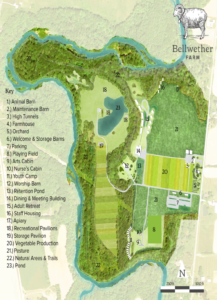 “Gracias por esta comida. Esta comida. Esta gloriosa y maravillosa comida. Y los animales. Y los vegetales. Y los minerales que lo hacen posible.”
“Gracias por esta comida. Esta comida. Esta gloriosa y maravillosa comida. Y los animales. Y los vegetales. Y los minerales que lo hacen posible.”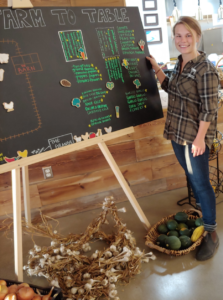
 La Granja de Bellweather es un Nuevo cam-pamento, lugar de retiro, centro de educacional de la diocesis episcopal del Ohio. Al fungir como el ge-rente de la granja, una de mis metas principales cuando recorro la granja con los jóvenes es el facili-tar un encuentro con el sitio desde donde extrae-mos la comida, lo cual se traduce en una experiencia con la tierra misma. Algunas veces me pongo nervioso de que necesito comunicar una verdad profunda sobre el universo, del como todos estamos conectados o del como todos nosotros entramos en decadencia día, tras día. Y luego caigo en cuenta de que lo único que necesito hacer es que los jóvenes sean ellos mismos en la granja –con las plantas, con los animales y con el suelo. Comerse un pepino extraído de la planta es magia pura, aunque tu no entiendas de fotosíntesis. Es curativa. Despierta algo muy adentro de nosotros.
La Granja de Bellweather es un Nuevo cam-pamento, lugar de retiro, centro de educacional de la diocesis episcopal del Ohio. Al fungir como el ge-rente de la granja, una de mis metas principales cuando recorro la granja con los jóvenes es el facili-tar un encuentro con el sitio desde donde extrae-mos la comida, lo cual se traduce en una experiencia con la tierra misma. Algunas veces me pongo nervioso de que necesito comunicar una verdad profunda sobre el universo, del como todos estamos conectados o del como todos nosotros entramos en decadencia día, tras día. Y luego caigo en cuenta de que lo único que necesito hacer es que los jóvenes sean ellos mismos en la granja –con las plantas, con los animales y con el suelo. Comerse un pepino extraído de la planta es magia pura, aunque tu no entiendas de fotosíntesis. Es curativa. Despierta algo muy adentro de nosotros.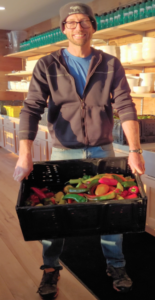
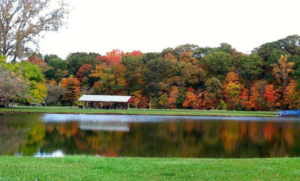 Before I go further, though, what is a Bellwether? I often hear this question while working at a place called Bellwether Farm. The term comes down to us from the Middle Ages, when shepherds singled out one ram in a flock to wear a bell and indicate where the flock was going—the Bellwether. In modern times, a bellwether has come to signify a herald of what is to come. In this sense, it is the Church’s vocation to be a bellwether of the kingdom of God, and the vocation of every Christian is to be a bellwether of God’s love, which includes our healing of the earth.
Before I go further, though, what is a Bellwether? I often hear this question while working at a place called Bellwether Farm. The term comes down to us from the Middle Ages, when shepherds singled out one ram in a flock to wear a bell and indicate where the flock was going—the Bellwether. In modern times, a bellwether has come to signify a herald of what is to come. In this sense, it is the Church’s vocation to be a bellwether of the kingdom of God, and the vocation of every Christian is to be a bellwether of God’s love, which includes our healing of the earth. Escrito por las Rev. Dr. Margaret Bullitt-Jonas y Rev. Dr. Leah D. Schade
Escrito por las Rev. Dr. Margaret Bullitt-Jonas y Rev. Dr. Leah D. Schade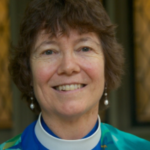 Margaret es una misionera para la diocesis Episcopal de Massachusetts en la parte oeste y la parte este del estado de Nueva Inglaterra, la iglesia unida de Cristo. Su página web es RevivingCreation.org.
Margaret es una misionera para la diocesis Episcopal de Massachusetts en la parte oeste y la parte este del estado de Nueva Inglaterra, la iglesia unida de Cristo. Su página web es RevivingCreation.org.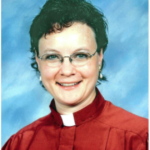 Leah es una ministra ordenada en la Iglesia evangélica luterana de América, y es también profesora Universitaria en el semanario teológico de Lexington. Ella escribe en el blog www.ecopreacher.blogspot.com.
Leah es una ministra ordenada en la Iglesia evangélica luterana de América, y es también profesora Universitaria en el semanario teológico de Lexington. Ella escribe en el blog www.ecopreacher.blogspot.com.